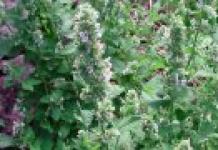Agave - what is it? This is a variation of the succulent that grows in dry areas, usually in the mountains. The plant feels great in Africa, Asia, Mexico and southern Europe. Most indigenous people prefer to use this flower for medicinal purposes, as it is endowed with a disinfecting effect.
Agave has voluminous fleshy leaves, which are combined into a large rosette near the roots.
The flower is similar to aloe, but has wider leaves, along the edges of which thorns can be located. The plant has a considerable size, so flower growers plant succulents, as a rule, in gardens, near hotels. Blue is also famous. In apartments, for the most part, dwarf or young flowers are grown.
Outdoor cultivation
Agave is a plant that can withstand the temperature of central Russia without any problems. 20-25 ° C are great for a flower. As soon as the air temperature drops below 10 ° C, it is better to transfer the plant to a warm room. In severe frosts, the flower dies. If it is not possible to grow a plant in open ground in the summer, it is recommended to expose the agave to fresh air. At a minimum, airing the agave room should be systematic.
Bloom
Agave is not one of the plants that will bring you the joy of flowering every summer.

The plant throws out a flower once, then it eventually dies off, and several new shoots form in its place. Agave begins to bloom only in the tenth year. The size of the peduncle is from 3 to 9 m, the inflorescences are small, brown-yellow. Flowers do not bloom immediately, but over several months. The inflorescences look like elongated boxes, accumulated in clusters. Inside are flat dark seeds.
Popular types of agave: description
- American - one of the most popular species. This is a large plant whose rosettes in the wild can reach three meters in diameter. The leaves are usually greenish-blue, up to two meters long and about 25 cm wide. There are brown-red spikes on the sides of the leaf. Blooms in the tenth year. Several forms of this species have been bred. Agave American yellow-rimmed grows very slowly. A wide strip of light yellow color is visible along the edge of the sheet. Agave american ornamental is a small plant with a wide white-yellow stripe in the center of the leaf. American decorated white agave has a white stripe in the middle of the leaf.
- Funka is small in diameter about 1.5 m. Greenish-gray leaves, reduced at the base, increase towards the middle and decrease again, turning into a white spike. Thorns can be seen on the sides of the leaves.
- Nitesnovaya is a compact succulent with beautiful leaves of a matte green color, along the edges of which there are long snow-white fibers, and at the end of the leaves there is a small thorn.
- The Queen Victoria agave is one of the more interesting forms. The socket has a spherical shape and reaches a diameter of 40-60 cm. The greenish leaves are decorated with oblique white stripes. The leaf looks like a triangle with an edge on the inside. The spines are visible only on the leaf plate.
- Potato is an ornamental type of agave, but not yet common in home floriculture. Leaf rosette - about 25 cm. Greyish-green leaves with a blue waxy coating are spatulate. At the tips of the leaves there are dark red spines, which are also on the edge.
- Compressed - the most unusual kind. It has narrow leaves and dense rosettes of spherical shape. The older the plant, the more rosettes it appears.
Features of care
Once you have purchased an agave, it is recommended to repot it, as the soil from the flower shop will not be suitable for the long life of the plant. Agave should be placed in a sunny place. If there is a backlight, then it's good, but not - it's not critical. The flower is recommended to be watered, fed and not rearranged. The agave needs time to adjust to the new location, pot and soil. In the first few weeks, the flower will take root, so it is important not to damage the roots and leaves of the plant.
Lighting
Agave room is completely unpretentious to lighting. It grows in both direct sunlight and light shade. If you put the plant on the north side, then set phytolamps as the backlight. In the cold season, agave growth slows down. Nutrients keep the flower in good condition until the warmer season arrives. For the winter, the agave, as it were, “falls asleep”.
Temperature regime
Agave is a heat-loving plant, so the room in which it grows should be well heated, then the flower will feel comfortable. Agave needs regular ventilation and an air temperature of at least 10 ° C, otherwise the plant dies.
Air humidity
Agave does not need spraying. And also it is not recommended to put a container with water or a humidifier next to the flower.

As a rule, in apartments, dry air is suitable for the plant. If the plant has dusty sockets, then they can be wiped with a damp cloth. After this procedure, do not forget to dry them, otherwise the leaves will rot.
Watering
Rare spraying is alternated with nutritious top dressing. About twice every seven days will be enough. As flower growers say, agave should be watered once a month in winter. Agave is an undemanding plant. Watering is carried out at the roots, it is not recommended from above, as moisture will accumulate in the sockets and rot will form.
top dressing
During the growing season, the flower should be fed once a month. You can use fertilizer for cacti. They mostly have a small amount of nitrogen, and it contributes to the development of rot in the leaves. If you fertilize more often, then nutrients will accumulate, which, in turn, will harm the agave. In winter, top dressing is not required, as the plant is resting.
Landing Rules
It is impossible to constantly transplant a succulent, during this operation the roots are damaged, it is difficult for the leaves and the plant to recover. There are three rules for transplanting a flower. Every year in the spring, a young plant is transplanted. Adult flower - as needed, for example, if the pot has become too small. Do not cover the neck of the agave, it should be above the ground. In this position, the plant will feel great. Agave should be repotted when it is not in bloom.

In extreme cases, remove the flower, the agave (photo above) spends most of its strength on its growth. But it is best to wait until the flower fades, and only then start replanting it.
reproduction
Agave can be propagated by seeds or by children. Seeds are not the best choice as the plant then grows very slowly.

But if you still chose this method, then the seeds are planted in early spring, maximum at the end of winter. When breeding with children, they are first separated from the main plant with a sharp knife. Then they are dried for twenty-four hours and planted in a pot. The earth must be prepared in advance. Rare watering is required until the plant takes root and gets used to the new place.
Soil preparation
Rocky or loose soil is perfect for growing agave at home. Where most of the flowers die, the agave will grow. At home, coarse river sand and turf are mixed in equal quantities. Or you can buy ready-made soil in the store. A baking powder is added to the soil, for example, sand or perlite. Drainage is installed at the bottom, this is required to pass excess water, due to which the roots and leaves rot.
Diseases and pests

If they are present in small quantities, they are removed with an alcohol swab. Next, wipe the leaves with an aqueous solution of soap and garlic. This method helps with a small infection, but if there are a lot of pests, then Aktellik or karbofos should be used. Agave is a picky plant that can survive in the middle lane, despite being accustomed to the climate of Asia and Mexico.
In appearance, agave is similar to aloe. There is a huge selection of plants, as more than 50 different types of agave are known. Succulents need rocky soil, diffused light and watering. It is necessary to monitor the temperature regime and constantly ventilate the room where the agave grows. The plant dies very quickly due to pests, for this reason, do not forget about feeding and processing.
Agave: useful properties
From most species, plants produce ropes, ropes, twine and other coarse fabrics. Wrapping paper is made from waste. Some types of succulents are bred in tropical areas for fiber.
From the juice of the peduncle, citric acid and food for bees are extracted, and the pulp is used to make soap.

From the sugary juice of the plant, which is harvested before flowering, pulque is prepared - a traditional Mexican alcoholic drink. And the core of the agave is used to produce strong alcoholic drinks such as tequila and mezcal. And besides, the juice is used as a laxative and painkiller. Due to the antiseptic and anti-inflammatory properties of agave, the plant is used for respiratory diseases.
The roots of part of the plant species are also used in medicine. American agave leaves contain steroidal saponins, which are used for the synthesis of hormonal drugs - cortisone, progesterone.
On the basis of agave, drugs for external use are produced, which are used for rheumatism and sciatica, for diseases of the mammary gland, bruises or sprains.
Indoor agave with its decorative appearance will bring unusual notes to the interior, both as a single plant and in compositions.
Agave blue or agave tequila(lat. Agave tequilana, Spanish Agave azul) - one of the types of agaves, widely used in agriculture for the production of an alcoholic beverage tequila. Agave cultivation reached its highest development in the state Jalisco, Mexico. Blue agave is also found in the wild, but already significantly differs in its characteristics from the domestic variety.


According to legend, the ancient Mexicans could not find any benefit from the blue agave growing densely in their country. And then higher powers came to their aid: from a lightning strike, the agave caught fire, and delicious juice poured out of it. The amazed Indians took this fragrant nectar as a gift from the gods. And many, many years later, in 1758, Don José Antonio de Guervo, who began to cultivate agave in the territory granted to him by the king of Spain, learned how to distill agave juice and make an alcoholic drink from it. And since Don Xocé lived near the village of Tequila in the province of Jalisco, he named his drink the same way - tequila.



In nature, there are a large number of different types of agave. Until 1902, various varieties of agave were used to make tequila, including those from which mezcal was made. The German scientist put an end to this Franz Weber, who came to Mexico in 1896 specifically in order to establish an agave variety that was optimal for making tequila. In 1902, he concluded (which the local population had empirically come to before him) that the blue agave (which was subsequently named after him) is best suited for this purpose. Agave Tequilana Weber). This plant is different from others - it is more fleshy, similar in shape to a large rose, fibrous, bluish or greenish-gray in color, tall, with hard leaves and thorns covered with wax that prevents water loss.

Many believe that Agave belongs to the cactus family. But it's not.





The fields where agave grows are located at an altitude of 1500 m above sea level. It is important that the precipitation level is about a meter per year, temperature fluctuations do not exceed 20 degrees, and the number of cloudy days per year ranges from 65 to 105. The soil in these areas is special - sandy, conductive moisture, rich in iron and other minerals. Agave pickers (jimador) use a special long-handled sharp tool (coa) with which they remove the long leaves and then the roots of the plants. After that, the head (core) is sent to the factory for further processing: juice extraction, fermentation and distillation.

The basis of tequila, just like mezcal and pulque, is the agave juice extracted from the core of the plant. Pinas are boiled over steam, sometimes under pressure, and then crushed to extract the juice. Tequila fermentation is faster, but not naturally, like mezcal, but with the help of yeast or cane sugar. Tequila is distilled twice and diluted, like mezcal, with distilled water to obtain the required degree. The strength of the drink intended for the domestic market is reduced to 40-46%, for the export version - up to 38-40%.
Today, tequila is the pride of Mexico, without which not a single film about this country can do. However, not all fans of this wonderful drink know what path tequila goes through to become what it becomes in the end. And the thing is that blue agave grows only in Central America, and only Mexicans use it as a raw material. Today, tequila is produced in the five states of Mexico, however, the best varieties are still supplied by the state of Jalisco. Standard tequila is distinguished by subtlety of aroma and transparency.



blue agave plantations are included in the UNESCO list of world heritage sites and are subject to protection. Not only the fields were protected, but also local tequila factories.
Today tequila strenuously "conquers" the world. Back in 1873, the enterprising Senobio Sauza, having founded his own tequila production, sent the first batch of several barrels to the United States. The Southa brandy tequila, presented at the Chicago World's Fair as "brandy mezcal", was met with interest and even won a medal. Only in 1910, tequila began to be called by the main city of its production. And today the city of Tequila remains the recognized capital of this drink. Every year at the end of November, a multi-day tequila fair is held here, in which all self-respecting producers take part. On the first day of the fair, any visitor has the right to treat himself to a drink he likes for free and appreciate its merits.

In addition, tequila has only its own ways of drinking, which provokes curiosity. The easiest way is to serve the tequila in a small narrow glass along with a heap of salt and a green lemon-lime. The drinker rubs the pad of the outer side of the left palm between the thumb and forefinger with lemon juice, pours a hill of salt on this place, then licks it off and drinks the contents of the glass (50 grams of tequila) in one gulp and immediately bites with a lemon wedge.

Another, no less original way of drinking tequila is that a portion of the drink is mixed with tonic and served to the visitor. He covers the glass with his hand, then slams his fist hard on the table (causing the tonic to boil) and gulps down the drink. This method contributes to a significant increase in the attendance of Mexican bars, where real competitions take place in the speed and dexterity of drinking a drink.
 To understand the significance of this event, let's just say that more than 500 brands of the highest quality tequila were presented to the Institute for a comparative tasting, and the samples were evaluated by world-class experts.
To understand the significance of this event, let's just say that more than 500 brands of the highest quality tequila were presented to the Institute for a comparative tasting, and the samples were evaluated by world-class experts.
Today, many varieties of tequila are sold around the world, but only a few of them have the right to bear this proud name. One of these is Olmeca Gold tequila, recognized as the best golden tequila in the world. Most recently, Olmeca Gold was awarded the Beverage Testing Institute (Chicago) Gold Medal for Best Premium Tequila.
The product was evaluated on the following characteristics: depth and roundness of the drink, bouquet, aftertaste and general properties. The results of the tasting determined Olmeca Gold tequila as the best gold tequila among the leading brands. The entire range of Olmeca tequila has been recognized as an exceptional and indispensable ingredient for creating this year's popular cocktails.
Olmeca tequila has been produced since 1873. Premium tequila is a drink that, like cognac and champagne, has a direct relationship with the area, climate, soil; the production of premium tequila is carefully controlled by law. The Olmeca tequila plant is located in the small town of Arandas in the state of Jalisco. The plant is located at an altitude of more than 2000 meters above sea level. It is here that the harmony of soil, sun, rainfall allows you to grow the most juicy and sugary blue agave, suitable for the production of premium tequila.
To date, Olmeca tequila is sold in 50 countries in Europe, Asia and Africa. Olmeca tequila is represented in Armenia thanks to the efforts of the official distributor - Pernod Ricard Armenia, the owner of the Yerevan Brandy Factory.
By the way, tequila is widely used by Mexicans as an aromatic additive to soft drinks. In the morning, leaving for work, they add it to tea or coffee. And the most famous tequila-based cocktail is the Margarita, which made tequila popular in the United States. It is made from three parts of dry tequila and one part of lemon juice, poured into a glass with ice. The following version of this cocktail is possible: mix 4 parts of tequila and one part of orange liqueur (for example, Cointreau). Preliminarily, the edges of the glass are decorated with "hoarfrost" from fine salt. With each sip of the drink, the drinker gets the opportunity to sip the salty edge of the glass, which is very convenient and effective.



Tequila Protection Law
Attempts to protect the name "tequila" and to legally define production methods have been made since the Second World War, but the first legislative acts appeared in 1974, when the Mexican government determined the delimitation zone for the production of tequila with an area of 200 square kilometers in the state of Jalisco (area of the city of Tequila).
Two years later, the main regulatory documents for the production of tequila were developed - Norma Oficial del Tequila (NORMAS - State Standard for Tequila), covering in detail all aspects of production. This time it was allowed to grow agave and produce tequila in the entire state of Jalisco (about 80 thousand square kilometers), in a number of areas of the adjacent states Guanajuato, Michoacán, Nayarit, as well as in the state Tamaulipas. At the same time, the copyright of the Mexican government for the term "tequila" was registered. Any tequila company must apply to the government for permission to use their intellectual property.

Immediately after the adoption of the revised NORMAS, the government carried out the verification and certification of all "tekilokurena". In 1992, these functions were transferred to an organization called Consejo Regulador del Tequila(Council for the Supervision of the Production of Tequila, abbreviated as CRT), which monitors the compliance of production with the provisions of NORMAS. The raw materials are checked and the percentage of presence of agave or other sugars in it, representatives of the CRT seal the barrels with tequila intended for aging.
Now every bottle of tequila produced in Mexico is labeled with the CRT badge (confirming the compliance of the enterprise with NORMAS regulations) and the abbreviation NOM with the number assigned by the Mexican Chamber of Commerce to this enterprise. NOM stands for Norma Oficial Mexicana de Calidad, the National Quality Standard of Mexico.

There are 53 tequila factories in Mexico. Until recently, to protect the interests of farmers, these enterprises were prohibited from buying land for agave plantations. But now the ban has been lifted. In 1990, the Asociacion Magueyeros de Oaxaca (Oaxaca Agave Growers Association) was founded, and around the same time, the Consejo Regulador (Surveillance Council), which certifies all enterprises, oversees the raw materials used and the technological processes.
Agave syrup is a product unique in its properties, which has become widespread in our country due to its availability and relative cheapness. The use of syrup has become widespread in the countries of Eurasia relatively recently and came to us from Mexico. This product has a very sweet taste, the saturation of which is many times greater than the sweetness of granulated sugar that is familiar to us.
Agave is a plant of the same family, and most people associate its appearance with aloe.
The juice of the plant, which has a strong sweetness, is extracted from unopened blue agave flowers. This process is quite laborious and consists in cold pressing of nectar. Although this method is not used in industrial production due to its low productivity.
The syrup is saturated with fructose, which, unlike sugars, is more easily absorbed by the body, although it is no less harmful when consumed in large quantities.
This article will tell you how to use this product, unique in its properties, in various areas of life, what to avoid and what indicators to guide the choice.
Using Agave Syrup
The use of agave syrup has found its niche in various areas of human life.
In cooking
In cooking, agave juice is used as a sweetener, and is also used in the production of homemade vodka. Although the latter is a rather expensive exercise, because the cost of the sweetest product is relatively high due to its overseas origin. Agave juice is used in the production of homemade wine drinks and artificial honey.
Agave syrup is used in cooking in the preparation of desserts, as well as in the manufacture of drinks.
It's just that you need to use the highest quality product for food. In the best quality syrup, the amount of glucose should be close to 50%. Of course, such syrups will be more expensive than analogues, but they will cause much less harm, and in some situations even bring invaluable benefits.
In medicine
In folk medicine, plant juice is used as an active dietary supplement that can fight inflammation of various organs. It is believed that the product has the ability to lower cholesterol levels in the blood and slow down the growth of various kinds of neoplasms. The product is also used as a stimulant for the production of substances responsible for the absorption of calcium by the body, which becomes relevant for the elderly.
Another manifestation of the beneficial properties of agave syrup can be called its ability to quickly anesthetize and relieve tension in the following conditions of the body:
- radiculitis;
- rheumatism;
- bruises;
- ligament sprains.
The pharmaceutical industry produces preparations based on natural agave juice, which have a contraceptive effect and quite effectively help to avoid an unplanned pregnancy.
In cosmetology
In cosmetology, sweet agave juice is used to make masks that help strengthen hair.
The product has a beneficial effect on the skin affected by acne and boils. The action of the plant is close to the action of the agave familiar to us. You just need to use either fresh agave juice or a special cosmetic preparation obtained in a cold way.

What can replace agave syrup?
How to replace agave syrup, many who have seen this ingredient in the recipe are thinking. In the recent past, it was believed that corn syrup did an excellent job of this, but after conducting laboratory studies that confirmed the danger of developing obesity when using the latter, it was agave syrup that was preferred. Although it is unsafe, as, indeed, all sugars, regardless of their origin and method of production.
Another possible substitute is maple syrup, which is also lower in calories.
Properties and quality
The properties of agave syrup have long been studied, as well as their effect on the human body as a whole. It has been proven that this product of good quality and produced by a conscientious manufacturer contains about 97% fructose. Tolerance is considered to be 85% fructose saturation.
The quality of the product and its properties also depend on its color, and this, in turn, depends entirely on the method of obtaining the syrup and the degree of its filtration.
Distinguish between light, dark and amber color of the finished product. Each of them differs in chemical characteristics, in particular, the amount of the main component in it. The composition of the sweet product obtained in a non-industrial way is as follows:
- fructose;
- dextrose;
- sucrose;
- inulin.
The maximum specific gravity among all components belongs to fructose, and the remaining substances occupy approximately equal shares in the total.
Medicine has proven that, in comparison with other sugars, the use of fructose has a more beneficial effect on the body and the metabolic processes occurring in it, although it cannot be considered completely safe.

Benefit and harm
The benefits and harms of agave syrup have long been studied by physicians and scientists, and meanwhile people are actively using the product in their diet. Today, many families use this syrup instead of granulated sugar due to its less harmful effects on the body. And the feedback about this product from consumers is pretty good.
Only now science does not adhere to such an opinion, and there are more and more facts indicating that, using in their diet, it would seem, a natural substance that a priori cannot be harmful, people cause great harm to their body.
They started talking about the benefits of the product when agave juice began to be used in dietary nutrition and nutrition of people with diabetes, positioning the product as an absolutely harmless substitute for traditional cane or beet sugar.
The undeniable fact remains that blue agave juice has a lower glycemic index than regular sugar, and therefore the product is more fully broken down in the body, and less effort is expended on its processing. But at the same time, it has been proven that regular use of this sweetener can play a cruel joke and suppress the natural ability of the digestive tract systems to properly and fully absorb insulin.
Therefore, the use of only agave juice in food can cause the following persistent and irreversible disorders in the body:
- rise in blood pressure;
- rapid deposition of subcutaneous fat, especially on the abdomen and buttocks;
- stimulation of resistance (resistance) to insulin;
- deterioration of the liver.
And although this syrup is positioned as the most harmless, you should not use it for diabetes, a tendency to obesity, pregnancy at any time and breastfeeding, as well as in early childhood.
Moderate use of this nectar is acceptable for people who do not suffer from liver diseases and do not belong to the above categories.
When using a product unfamiliar to the regional cuisine, it is always advisable to use it in small doses, as well as to strictly monitor the manifestations that may occur in the event of an allergic reaction to the components.
The naturalness of the product, of course, attracts the attention of people, but when deciding to use this product in your diet, be sure to weigh the pros and cons, based on your own beliefs.

Surely you have heard of agave more than once. Such a plant is known even far beyond the borders of those countries in which it grows. This is due to the fact that the agave plant is a raw material for the production of drinks such as pulque and tequila. However, this is not its only application. Now it has become very popular to replace sugar with agave syrup. It is about him that will be discussed in our article.
What is agave?
Agave - a plant (exotic), growing on the volcanic soils of Mexico. The culture blooms only once, gathering huge crowds of tourists who want to see an amazing sight. Around the world, agave is known as a raw material for the production of the famous tequila.
At the word "agave" in the imagination of everyone, beautiful exotic pictures of the tropics arise. This is exactly what agave syrup manufacturers are counting on, advertising their products as a completely harmless and at the same time useful sugar substitute.
How is the product prepared?
Agave syrup has been known for a long time. It is prepared using approximately the same technology as maple syrup. The juice is placed in containers and evaporated until it thickens to a certain consistency. The liquid should be viscous. This is agave syrup. Depending on the duration of processing, the mass may have a light yellow or dark color.

However, the production of syrup on an industrial scale is slightly different. Given the number of stages of processing that raw materials undergo, it is difficult to say whether anything useful remains in the final product. We can definitely say that we are purchasing a product with a high content of fructose.
But how useful or harmful it is depends entirely on how it was processed. In agave syrup, the fructose content is at the level of 70-90%, which is the same as in corn syrup, which has long been banned from use. A number of countries have banned its use in the manufacture of products because of its potential to lead to obesity. Let's see - what are the benefits and harms of agave syrup.
Product taste
Agave syrup is often compared to honey. This is a completely wrong approach. And there is nothing in common in their tastes. Everyone who has tried using agave syrup instead of sugar says that it has a special, unlike anything taste. Someone catches vegetable notes in it, someone creamy. And for some, the product generally resembles molasses. Like it or not, there is nothing to compare the taste of agave syrup with, since it is unique in its own way.
Modern syrups
The recipe for making syrup from the plant has been known for hundreds of years. However, it was used in those regions where agave grows. And only in the last decade the product has reached a wider range of consumers.

Beneficial features
Real agave syrup is really useful because it contains: vitamins A, E, K, B, PP, as well as calcium, potassium, zinc, magnesium, copper, selenium, manganese, iron, sodium and phosphorus. Such a product is especially useful for those who follow diets. Due to fructose, the syrup ensures a normal metabolism, helping to remove toxins and toxins from the body.
Medicinal properties
Agave contains fructans and saponins. The latter are also found in the roots of other plants, such as ginseng. It is saponins that have an anti-inflammatory effect, strengthen the immune system, and have an antimicrobial effect. Even the Aztecs used agave tincture to treat various wounds.

One of the varieties of fructans is the substance inulin, which has a number of properties:
- Studies have shown that inulin can be useful for people who are overweight. The substance has an effect on blood sugar levels and enhances the feeling of satiety, thereby reducing appetite.
- Inulin can lower the level of cholesterol in the body, and also reduces the risk of certain types of cancer.
- Useful properties of the plant allow it to be used in order to prevent pregnancy. In China, substances such as dinordrin and anordrin are isolated from agave, which are part of the group of contraceptives, they can be taken only a couple of times a month, unlike other pills.
- Studies have shown that thanks to inulin, calcium absorption is improved by twenty percent, which leads to an increase in tissue density by fifteen percent. Such properties of the plant are important for people of age, whose bones are prone to fragility.
- Agave contains steroidal saponins, which are good as an antirheumatic agent.
Agave can be used as a remedy and at home. People suffering from neuritis and rheumatism can apply a cut sheet to a sore spot, wrapping it with a bandage. Such a compress should be kept for at least two hours. If an agave leaf causes a burning sensation, then the natural juice of the plant can be diluted with water in equal proportions, and then used for compresses and lotions.
Application of syrup
The syrup is used for a variety of purposes. It is even served as an independent drink or at the end of a meal. In the homeland of agave, syrup is considered a good aperitif. It is served in small glasses (no more than 50 grams). Syrup, served as a dessert, is able to cheer up, increase the tone of the body.

In addition, it goes well with gold and silver tequila, as well as with all kinds of liquors. A good bartender is able to offer at least fifteen cocktails using syrup. The most famous among them are "Watermelon Margarita", "Mexican Breakfast", "Postcard from Italy" and "Platinum Berry".
Agave syrup is used in some countries for the production of confectionery.
Is syrup safe?
The benefits and harms of agave syrup are the subject of much debate among experts. The miracles of marketing led to the incredible popularization of the syrup. However, some scientists believe that the product is far from safe. Unfortunately, it is currently advertised as a sugar substitute for diabetes due to the fact that fructose has a low glycemic index. But you should not forget that fructose can dramatically increase the resistance of the human body to insulin, which is also quite dangerous.

In addition, American scientists in the course of research came to conclusions about the dangers of using monosaccharides, since they lead to the destruction of the liver. Such conclusions were drawn regarding corn syrup. This means that this also applies to agave syrup, the level of fructose in it sometimes greatly exceeds that of the corn counterpart.
What are modern store-bought syrups?
All of the above beneficial properties of the plant itself and the syrup from it can be discussed when it comes to a natural product. It is difficult to say how good and safe the syrups offered by different brands are. Much depends on the initial raw materials, on how the fermentation process took place (low temperatures are preferable, since this reduces the loss of natural enzymes). Good syrup can be considered, in which the fructose content is 50%. It is difficult to find such a product in stores. As a rule, syrups of all brands have an indicator of about 90%.
Unfortunately, many manufacturers make a product that is much more dangerous than corn syrup. Therefore, if you decide to use agave nectar, then you should be more responsible in choosing a brand.
Why is fructose so important to the body?
It is no secret that glucose is the source of life for the body. Regular sugar contains both fructose and glucose. Of course, people prefer to use the first substance. But it is worth remembering that fructose is absorbed by the body in a completely different way than glucose. It is completely consumed by the liver, while damaging its cells. This means that it can provoke a number of chronic diseases. It is worth noting that a few centuries ago people consumed much less fructose than now (by 400-800%).
Fructose is converted to adipose tissue
As we have already said, an excessive amount of fructose adversely affects the liver itself. Experts have proven that it is almost completely converted into fat. That is why fructose is the main cause of obesity.

The situation is quite different with glucose, only 20% is processed by the liver. The irony is that people consume fructose to avoid obesity, not knowing that it is the source of extra pounds.
It should be understood that the fructose contained in vegetables and fruits is not at all the same substance that is present in synthetic syrups. The natural substance enters the body with minerals, vitamins and trace elements. But fructose syrup has no nutritional value. Yes, and these substances are processed in different ways.
Fructose is an incredibly cheap sweetener, so it is used in a number of countries for the production of many products, but there is not a word about it in the labeling. So, there is a risk to exceed the daily norm of this substance.
The agave plant is known as a raw material for making tequila. But, in fact, in addition to the production of alcohol, it is used in many industries. Agave syrup, juice, core of the stem and leaves are widely used in cooking and medicine. And grown at home, it brings not only aesthetic pleasure, but also practical benefits.
The genus Agave has more than three hundred species. The most typical representative is the American one. Other more famous species are blue agave, sisal, straight, Queen Victoria, drawn.
Agave has a strongly shortened stem, fleshy leaves with thorns, a long peduncle, on which flowers bloom in large numbers. The fruits are capsules that ripen in place of the flowers. Often, the core of the stem is considered the fruit, which, after chopping off the leaves, becomes like a pineapple.
The chemical composition of the core and leaf pulp Although the composition of the plant has not been fully studied, it has been found:
- essential substances;
- iron;
- phosphorus;
- magnesium;
- saponins;
- active biological compounds;
- vit. C, B, E;
- organic acids;
- fructose.
The presence of volatile compounds and essential oils explains the specific smell and taste that agave juice and a drink from it have.
Beneficial features

In addition to its production value, the Mexican (growing directly in Mexico) agave is important to the indigenous population. So, the Indians eat the flowers of the plant, bake the core and leaves, and make flour from them. Many types of agave are suitable for making lasso, rope, fishing nets. All varieties are used to treat snake bites and control insects.
Application in industrial production
Due to the strength of the leaf fiber, many varieties of agave are used as raw materials for the manufacture of:
- ropes,
- rugs;
- fabrics;
- mats;
- ropes;
- paper;
- ropes and so on.
More often, varieties are suitable for these purposes: sisal agave, kanthala, American, fukreiform, folded and hard. Sisal, henequen, espadin and sesame fiber are made from them. Such agave as the American one contains sapogenins, it is used in the manufacture of soap.
Application in the food industry

The main directions are the production of alcohol and cooking. So, blue agave is used in the preparation of tequila. To do this, the juice of the core of the plant is distilled by distillation 2-3 times. Drink strength: from 38 ̊ to 55 ̊. In order to obtain it, agave syrup can be used. Classic tequila is 100% made from this succulent. Other juice (for example, corn) can also be added by the manufacturer, but its volume should not exceed 49%.
The dark green variety is used to make pulque, which also contains alcohol. The peculiarity of its preparation is to prevent the formation of flowers by cutting out a flower bud. From the resulting hole for 4 - 6 months scoop out up to 1000 liters of accumulated juice. Moreover, by this time he is already starting to wander. The finished drink gains a strength of 4 ̊ - 7 ̊ in 10 - 14 days and quickly turns sour. Therefore, it is sent for sale unripe.
In cooking, agave syrup is used. On its basis, cocktails with a low alcohol content, jelly and compotes are made. At home, it can be added to pastries, ice cream, or used as a sweet gravy for pancakes, donuts, and pancakes. In Mexico, its leaves are added when stewing meat, as well as in salads.
Agave syrup contains ~90% sugars. Most of them are represented by fructose. There are two points of view on the health benefits of the product. At the first, agave syrup is contraindicated for use due to its high calorie content (~ 370 kcal). Proponents of a different opinion argue that agave syrup contains inulin and can be used for weight loss.
However, this fructose content may well replace granulated sugar for people with diabetes.
Application in crop production
Many varieties are used in landscape design, home floriculture, and grown in greenhouses. Flowers are planted to create a hedge, as well as in composition with other plants to give the area an exotic look.
The following flowers are commonly grown at home: American, filiform, Queen Victoria, blue agave. They grow well indoors, are picky in care, but flowers are rarely released.
medical application

The medicinal properties of the agave were noticed by the Indians. The pulp of the leaves they treated wounds, burns, abscesses. Agave sap was used as a means of drawing out snake venom from the bite site. A fermented drink containing alcohol was used for problems with the digestive system.
Due to the anti-inflammatory, analgesic, laxative and diuretic effects, agave treatment is acceptable for:
- diseases of the bladder;
- constipation;
- burns;
- furunculosis;
- neuralgia;
- arthritis;
- sciatica;
- liver diseases;
- radiculitis, etc.
A drink from any variety normalizes metabolism, relieves swelling, has a mild diuretic and laxative effect. Such a drink can be prepared at home by diluting agave syrup with water. True, its health benefits will be reduced.
If the leaves of a plant of any variety are crushed and alcohol is added, and allowed to stand for 2 to 3 weeks, a healing tincture will be obtained. Compresses from it are useful in case of neuralgia, sciatica, bruises.
Diluted juice in a ratio of 1:20 is drunk when gastrointestinal problems occur. The same solution is used in case of joint ailments, applying a compress. It can be kept overnight. Unlike pure juice, it does not burn the surface of the skin.
A drink from this plant is taken an hour or two before meals. Usually 50 - 70 ml. It stimulates metabolic processes, triggers detoxification mechanisms, relieves spasms of blood vessels and muscles.
In the American variety, there are substances used in pharmacology for the synthesis of hormonal drugs. The Chinese industry produces contraceptives based on these substances.
Contraindications

You can not use flowers, juice and agave syrup inside with:
- liver diseases;
- obesity
- pregnancy;
- allergies;
- hormonal diseases.
Do not give agave juice to children, even after dilution. Due to the contraceptive effect, the use of this plant in any form is not recommended in case of lactation. And because of the diuretic action, you should not drink juice or syrup for people with kidney disease.
Growing at home
Agave flowers are not too demanding on the conditions of the house. Lighting is preferred moderate, without direct sun. In summer, they withstand T ̊ ~ 30 ̊, in winter - about 6 ̊ C. They like loose soil, poor in substances. So, for planting, you can take the turf and the top layer of rotten foliage. Add sand to the mixture - you get an excellent soil for this succulent. Be sure to make drainage at the bottom of the container.
You need to water indoor agave 2 times a week. In cold weather, even less often: once every 7-10 days. It accumulates liquid in the leaves, so the loss of moisture is not terrible for her. Fertilization is enough to carry out in the period February - March and in August once.
It propagates by seeds, root, and stem offspring. The latter can be immediately planted in the soil, just add more sand than for an adult plant. You can put the offspring in the water, adding phytohormones for the rapid appearance of roots.
Agave is a mysterious and original plant. The beneficial properties of agave and its healing possibilities are more exotic for us than recipes that have been proven over the years. When using homemade tincture, agave syrup or leaf pulp for medicinal purposes, you need to check yourself for an allergic reaction.



































